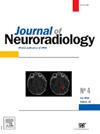管道屏蔽栓塞后的双重抗血小板治疗实践及其对三个大型现实生活登记不良事件的影响
IF 3.3
3区 医学
Q2 CLINICAL NEUROLOGY
引用次数: 0
摘要
背景:颅内动脉瘤分流支架治疗后的双重抗血小板治疗(DAPT)处方是标准的治疗方法,但关于DAPT药物的选择和持续时间的证据仍然有限。我们的目标是报告从业者的DAPT处方习惯,并分析他们在实际使用Pipeline™Flex与Shield技术支架时对不良事件的影响。方法回顾性分析3项上市后核心实验室评审研究的数据。排除急性动脉瘤破裂或单一APT患者。收集DAPT持续时间,将患者分为2个DAPT持续时间组(<;或≥6个月)。结果共纳入707例动脉瘤776例。选择P2Y12抑制剂的主要是氯吡格雷(68.7%)、替格瑞洛(15.8%)和普拉格雷(12.2%)。DAPT中位持续时间为177天(IQR 93-227)。年轻患者和mRS≤2的患者接受更长时间的DAPT治疗。全球缺血性卒中发生率为3.2%(停用DAPT前为2.5%,停药后为0.7%),而主要出血风险为3.5%(停用DAPT前为3.5%,停药后为0%)。出院后缺血性卒中和大出血发生率分别为1.8%和1.4%。血栓栓塞并发症和缺血性脑卒中的累积发生率均高于对照组;6个月组(7.5%)vs <;6个月组(4.6%),差异无统计学意义。结论:在这项大型现实世界回顾性分析中,大多数主要不良事件报告发生在fds手术后30天内。出院后和停用DAPT后的并发症发生率非常低,DAPT持续时间组之间相似。这些数据为设计未来的前瞻性研究提供了基础,以评估最佳的DAPT方案——包括药物类型和持续时间——这可能会为未来的临床指南提供信息。本文章由计算机程序翻译,如有差异,请以英文原文为准。
Dual antiplatelet therapy practices following Pipeline Shield embolization and their impact on adverse events in three large real-life registries
Background
Dual Antiplatelet Therapy (DAPT) prescription following flow-diverter stent treatment of intracranial aneurysms is standard of care but evidence regarding the drugs of choice and duration of DAPT remains limited. We aim report to report practitioners’ DAPT prescribing habits and to analysis their impact on adverse events in real-world use of Pipeline™ Flex with Shield Technology stent.
Methods
Data from 3 post-market core lab adjudicated studies were retrospectively analyzed. Patients with acutely ruptured aneurysms, or on single APT were excluded. DAPT durations were collected, and patients were divided in 2 DAPT duration groups (< or ≥ 6 months).
Results
The analysis included 707 patients with 776 aneurysms. The P2Y12 inhibitor of choice was mainly clopidogrel in 68.7 %, ticagrelor in 15.8 % and prasugrel in 12.2 %. Median DAPT duration was 177 days (IQR 93–227). Younger patients and those with mRS ≤ 2 significantly received longer DAPT. Global ischemic stroke rate was 3.2 % (2.5 % before and 0.7 % after DAPT discontinuation) whereas major bleeding risk was 3.5 % (3.5 % before and 0 % after DAPT discontinuation). Post-discharge ischemic stroke and major bleeding rates were 1.8 % and 1.4 % respectively. Cumulative rates of both thromboembolic complications and ischemic strokes were higher in the < 6 months group (7.5 %) vs < 6 months group (4.6 %) without reaching statistical significance.
Conclusion
In this large real-world retrospective analysis, most major adverse events were reported within 30 days post-FDS procedure. Complications rates after discharge and after DAPT discontinuation were very low and similar between DAPT duration groups. These data provide a foundation for designing future prospective studies to evaluate optimal DAPT protocols—both in terms of drug type and duration—which could potentially inform future clinical guidelines.
求助全文
通过发布文献求助,成功后即可免费获取论文全文。
去求助
来源期刊

Journal of Neuroradiology
医学-核医学
CiteScore
6.10
自引率
5.70%
发文量
142
审稿时长
6-12 weeks
期刊介绍:
The Journal of Neuroradiology is a peer-reviewed journal, publishing worldwide clinical and basic research in the field of diagnostic and Interventional neuroradiology, translational and molecular neuroimaging, and artificial intelligence in neuroradiology.
The Journal of Neuroradiology considers for publication articles, reviews, technical notes and letters to the editors (correspondence section), provided that the methodology and scientific content are of high quality, and that the results will have substantial clinical impact and/or physiological importance.
 求助内容:
求助内容: 应助结果提醒方式:
应助结果提醒方式:


